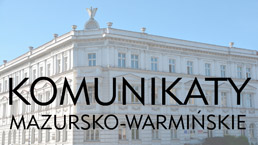W opracowaniu
Aktualny numer
Numery specjalne
Archiwum
O czasopiśmie
Redakcja
Rada Redakcyjna
Recenzenci
Instrukcja redakcyjna
Zasady etyki publikacyjnej
Zasady recenzowania
Ghostwriting
Prawa autorskie i polityka Open Access
Klauzula informacyjna RODO – dla autorów artykułów zgłoszonych do publikacji w kwartalniku „Komunikaty Mazursko-Warmińskie”
Kontakt
Cennik
PROJEKTY
Proste formy kooperacji rolnej jako ukryte metody kolektywizacji wsi na Warmii i Mazurach w latach 1948–1956
1
Instytut Historii Wydział Humanistyczny
Uniwersytet Warmińsko-Mazurski w Olsztynie
Data publikacji online: 20-05-2020
Data publikacji: 20-05-2020
KMW 2020;307(1):82-97
SŁOWA KLUCZOWE
DZIEDZINY
STRESZCZENIE
Along with the change in the agricultural policy in 1948 that was inspired by the Kremlin and imposed during the 2nd Cominform in Bucharest, the collectivisation of the rural area became a doctrinal issue in the agricultural policy of Communist states. Apart from the direct methods of collectivisation that concerned strong administrative and economic pressures towards the peasants, the authorities also undertook actions that were to introduce the production cooperatives in a more clouded manner. These included, among others, establishing self–help villages, joint agreements between the villagers and State Machinery Centres (Pol. Państwowe Ośrodki Maszynowe, POM) for machinery services for their fields, developing simple forms of agricultural cooperation in the arbitrarily created units for cultivation, grassland, farming, etc. These activities, aided by a system of con-cessions and preferences, brought certain results, especially towards the end of the discussed period. They prove the wide array of measures and methods used by the Communist authorities in their attempts at collectivisation.
Udostępnij
ARTYKUŁ POWIĄZANY
Przetwarzamy dane osobowe zbierane podczas odwiedzania serwisu. Realizacja funkcji pozyskiwania informacji o użytkownikach i ich zachowaniu odbywa się poprzez dobrowolnie wprowadzone w formularzach informacje oraz zapisywanie w urządzeniach końcowych plików cookies (tzw. ciasteczka). Dane, w tym pliki cookies, wykorzystywane są w celu realizacji usług, zapewnienia wygodnego korzystania ze strony oraz w celu monitorowania ruchu zgodnie z Polityką prywatności. Dane są także zbierane i przetwarzane przez narzędzie Google Analytics (więcej).
Możesz zmienić ustawienia cookies w swojej przeglądarce. Ograniczenie stosowania plików cookies w konfiguracji przeglądarki może wpłynąć na niektóre funkcjonalności dostępne na stronie.
Możesz zmienić ustawienia cookies w swojej przeglądarce. Ograniczenie stosowania plików cookies w konfiguracji przeglądarki może wpłynąć na niektóre funkcjonalności dostępne na stronie.




